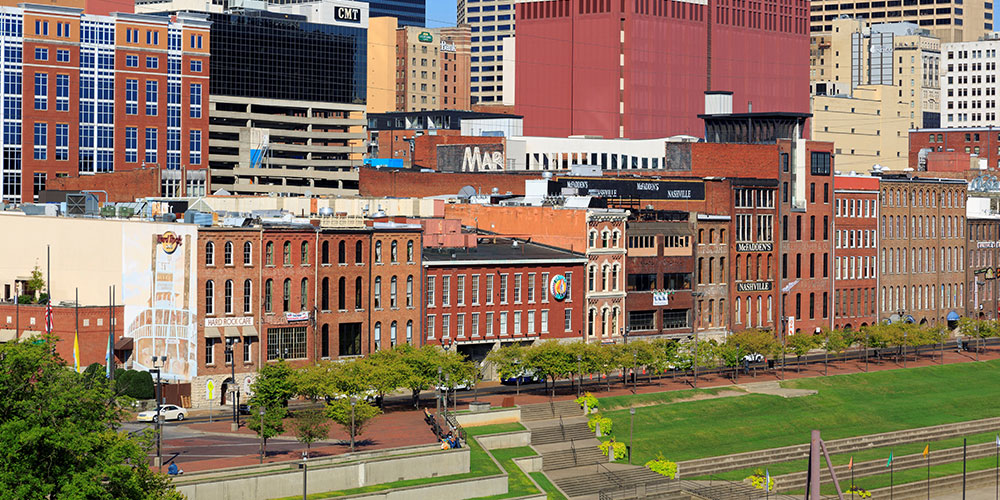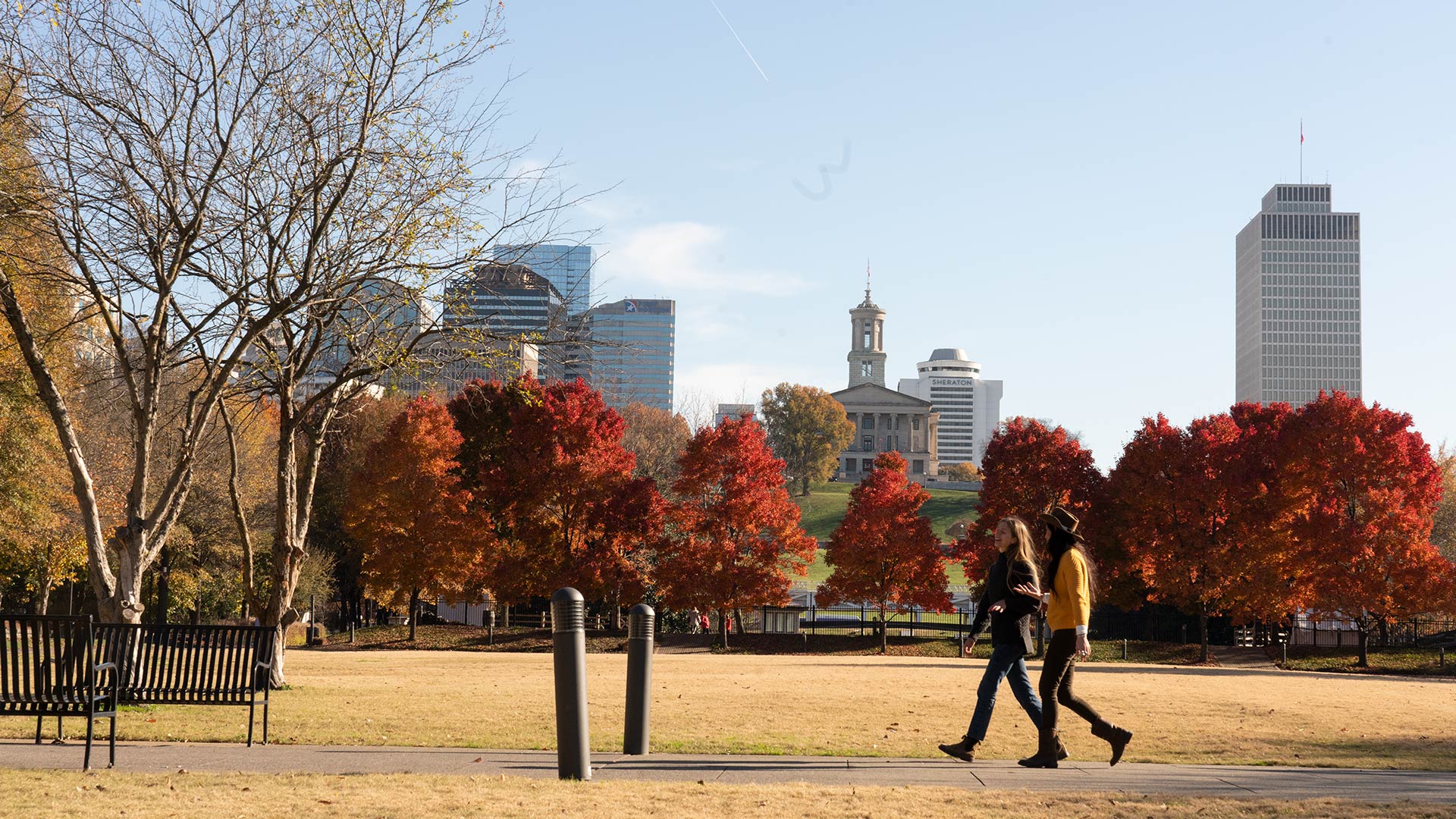
Explore Nashville’s historic Riverfront Park. (Photo: RGB Ventures / Superstock / Alamy)
NashvilleGet a Dose of Nashville’s Storied Past on a Historic Walking Tour
By Valerie ConnersIt would be a fail to visit Nashville and explore no further than its famed Music Row. While the city’s ties to country music are strong, it has a fascinating history that dates back to the early 19th century. Learn more about the city’s past on a walking tour of its historic sights, before buckling up and driving to the home of one of America’s most intriguing former presidents.
Walk Through History
Lace up your sneakers and grab a camera. Nashville’s historic district is an easy walk from the heart of downtown. Take a stroll down Fifth Avenue, where you’ll stop to admire many well-preserved 19th-century residences. As you walk, keep an eye out for 104 Fifth Avenue. This Federal-style structure is the oldest residential building in downtown Nashville, built in 1820.
Next, make your way to Printer’s Alley, a narrow alley tucked between Third and Fourth Avenues and running from Union Street and Commerce Street. Now a mainstay of Nashville’s rocking nightlife scene, the alley was home to a vibrant publishing industry in the early 20th century, including two large newspapers, ten print shops, and thirteen publishers. The alley became a nightlife district in the 1940s, and was home to Jimmy Hyde’s Carousel Club, a jazz venue frequented by the likes of Chet Atkins and Boots Randolph.
For a taste of the outdoors, head to Riverfront Park. Created as a monument to the city’s river history, it includes a replica of the first river settlement, as well as statues of the town founders and notable early settlers.
Finally, if you have the energy, wander along Second Avenue, where you’ll find Victorian-style buildings dating from 1870 to 1890, which now house shops, restaurants, and galleries.
Andrew Jackson’s Hermitage
One of the country’s most fascinating presidents, Andrew Jackson, made his home at The Hermitage from 1804 until 1845. Located 20 minutes outside downtown Nashville, the mansion and its grounds are considered the best-preserved presidential home in the nation.
The original Hermitage mansion was a brick, Federal-style house constructed between 1819 and 1821. A devastating fire led to a redesign that included transforming the entrance to resemble a Greek temple by adding six, two-story columns. Visitors can admire the original furnishings, Greek Revival-style ornamentations, and original wallpaper.
The tombs of Andrew Jackson and his wife are located on the southeast side of the garden. The property has been restored to appear as it did in 1837, when the family returned after their time in the White House.







